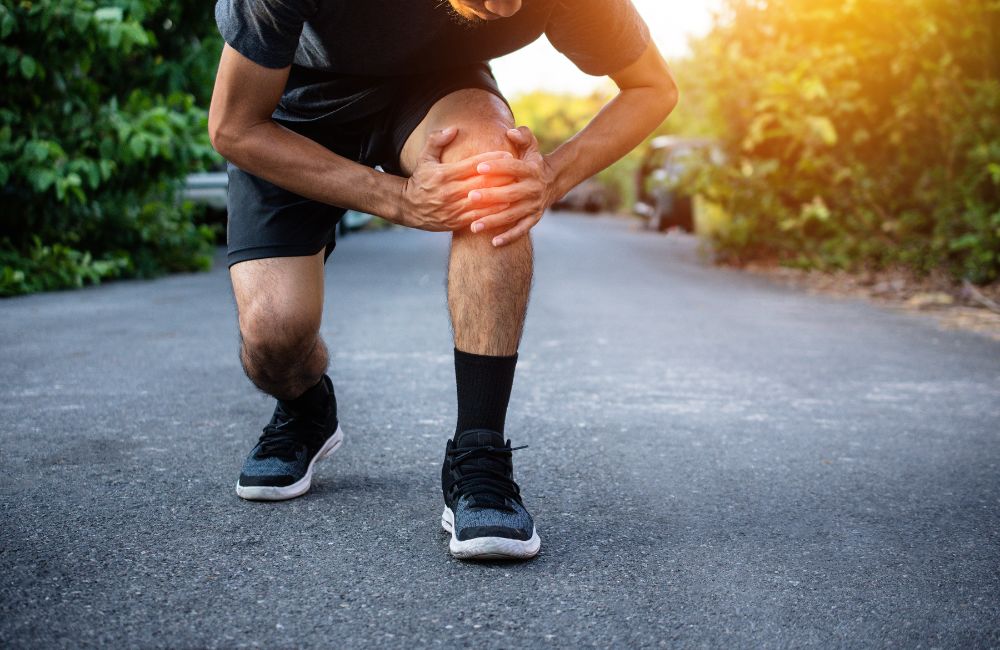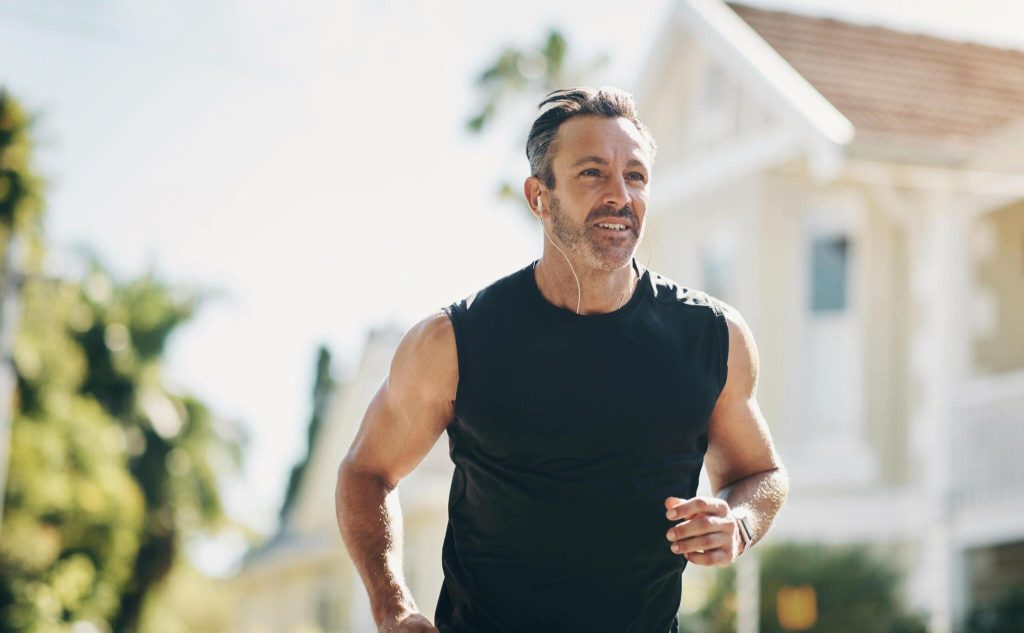
Hormone therapy for men is a medical treatment aimed at addressing hormonal imbalances that can affect overall health, energy levels, mood, and physical fitness. This therapy is often used to treat conditions such as low testosterone, which can lead to symptoms like fatigue, depression, and reduced muscle mass. After age 30, testosterone levels begin to gradually decline, and chronic health conditions like obesity and type 2 diabetes can exacerbate this decline. While hormone therapy for men can be highly effective, combining it with an appropriate exercise regimen can significantly enhance its benefits.
How Exercise Influences Hormone Levels
Exercise plays a crucial role in regulating and boosting hormone levels in the body. Physical activity, especially resistance training and high-intensity workouts, can increase the production of testosterone and other beneficial hormones. For instance:
- Resistance Training: Men who engaged in regular resistance training experienced significant increases in testosterone levels compared to those who did not exercise. This increase in testosterone is vital for men undergoing hormone therapy, as it can amplify the therapy’s effects, leading to better overall health outcomes.
- Insulin Sensitivity: Exercise enhances insulin sensitivity, which is crucial for maintaining balanced hormone levels. Improved insulin sensitivity helps regulate blood sugar levels, reducing the risk of conditions like diabetes, which can negatively impact hormonal health.
- Cortisol Levels: Physical activity can reduce cortisol levels, a stress hormone that, when elevated, can interfere with testosterone production. By incorporating regular exercise into your routine, you can create a more favorable hormonal environment in your body, complementing the effects of hormone therapy for men.
Benefits of Combining Exercise with Hormone Therapy
Combining exercise with hormone therapy for men offers numerous benefits. Physical activity can enhance mood by increasing the production of endorphins, often referred to as “feel-good” hormones. Moreover, regular exercise boosts energy levels, helping men feel more invigorated and capable of handling daily tasks with ease. Key benefits include:
- Improved Mood: Exercise increases the production of endorphins, helping to alleviate symptoms of depression and anxiety.
- Increased Energy Levels: Regular physical activity boosts energy, making it easier to manage daily activities.
- Enhanced Muscle Growth: Exercise promotes muscle growth and strength, which is particularly beneficial for men undergoing hormone therapy. Testosterone is a key hormone for muscle development, and combining hormone therapy with strength training can lead to significant improvements in muscle mass and overall physical fitness.
- Better Cardiovascular Health: Cardiovascular exercises improve heart health and circulation, supporting the body’s ability to deliver oxygen and nutrients to tissues, including muscles.
- Weight Management: Hormonal imbalances can lead to weight gain, particularly around the abdomen. Regular physical activity helps burn calories and maintain a healthy weight, which in turn supports better hormone balance.
- Improved Sleep Quality: Exercise can improve sleep quality, which is essential for overall health and hormonal regulation. Better sleep patterns contribute to more stable hormone levels, enhancing the effectiveness of hormone therapy for men.
12 Exercises That Support Hormone Therapy for Men
Incorporating the right exercises into your routine can significantly enhance the effectiveness of hormone therapy for men. These exercises not only help in boosting testosterone levels but also improve overall physical fitness, mental well-being, and quality of life. Here are 12 exercises that support hormone therapy for men, providing detailed explanations, benefits, and tips for each.
Exercise 1: Weight Lifting
Weight lifting is one of the most effective exercises for supporting hormone therapy for men. It involves lifting weights to build muscle mass and strength. Studies have shown that weight lifting can significantly increase testosterone levels and improve overall physical fitness.
Benefits
- Testosterone Boost: Stimulates testosterone production, crucial for muscle growth and overall health.
- Muscle Mass: Helps build and maintain muscle mass, essential for physical fitness and metabolic health.
- Strength: Improves overall body strength, making daily tasks easier and reducing the risk of injuries.
Recommended Frequency and Duration
- Aim for Consistency: Lift weights at least three times per week to see progress.
- Focus on Compound Movements: Incorporate squats, deadlifts, bench presses, and rows for maximum muscle engagement.
- Repetition Range: Perform 3-4 sets of 8-12 repetitions for each exercise.
Proper Forms
- Maintain Proper Form: Keep your back straight and core engaged throughout each exercise.
- Gradual Progression: Start with lighter weights and increase gradually to avoid strain or injury.
- Seek Professional Guidance: Consider working with a trainer to learn correct form and technique.
Exercise 2: Squats
Squats are a powerful exercise for building lower body strength and boosting testosterone levels. This compound movement targets the quadriceps, hamstrings, glutes, and core muscles.
Benefits of Squats for Hormone Levels
- Testosterone and Growth Hormone: Stimulates the release of growth hormone and testosterone, essential for muscle growth and overall health.
- Lower Body Strength: Improves strength and stability in the legs and core, enhancing overall physical fitness.
- Functional Fitness: Mimics everyday movements, improving your ability to perform daily tasks.
Proper Form and Variations
- Form: Stand with feet shoulder-width apart, toes slightly turned out. Lower your body by bending your knees and hips, keeping your back straight. Push through your heels to return to the starting position.
- Variations: Goblet squats, front squats, split squats.
Exercise 3: Deadlifts
Deadlifts are another essential exercise for supporting hormone therapy for men. This full-body movement targets the back, glutes, hamstrings, and core muscles.
Benefits
- Full-Body Strength: Improves strength in the back, legs, and core, enhancing overall physical fitness.
- Functional Fitness: Mimics everyday movements, improving your ability to perform daily tasks.
Safety Tips
- Start Light: Begin with a light weight and gradually increase as you build strength.
- Form: Keep your back straight and engage your core throughout the movement. Avoid rounding your back to prevent injury.
- Progression: Consider working with a trainer to ensure proper form and technique.
Exercise 4: Push-Ups
Push-ups are a versatile upper body exercise that can be performed anywhere. They target the chest, shoulders, triceps, and core muscles.
Benefits
- Upper Body Strength: Helps increase strength in the chest, shoulders, and triceps.
- Muscle Mass: Supports muscle growth and maintenance, essential for overall physical fitness.
- Versatility: Can be modified to suit different fitness levels and performed anywhere.
Variations
- Standard Push-Ups: Basic push-up form with hands shoulder-width apart.
- Wide-Grip Push-Ups: Hands placed wider than shoulder-width apart to target the chest.
- Close-Grip Push-Ups: Hands placed close together to target the triceps.
- Incline Push-Ups: Hands elevated on a surface to reduce intensity.
Exercise 5: Pull-Ups
Pull-ups are an effective exercise for building upper body strength and supporting hormone therapy for men. They target the back, shoulders, and arms.
Benefits
- Upper Body Strength: Helps increase strength in the back, shoulders, and arms.
- Muscle Mass: Supports muscle growth and maintenance, essential for overall physical fitness.
- Endurance: Improves upper body endurance and overall physical performance.
Modifications
- Assisted Pull-Ups: Use a resistance band or machine to reduce the amount of body weight lifted.
- Negative Pull-Ups: Focus on the lowering phase of the pull-up to build strength.
- Chin-Ups: Perform with palms facing towards you to target different muscles.
Exercise 6: Cycling
Cycling is an excellent cardiovascular exercise that supports hormone therapy for men by improving heart health and increasing cardiovascular fitness.
Benefits
- Cardiovascular Health: Improves heart health and reduces the risk of cardiovascular disease.
- Stress Reduction: Lowers cortisol levels, which can negatively impact testosterone production.
- Weight Management: Helps burn calories and maintain a healthy weight, supporting better hormonal balance.
Tips for Incorporating Cycling
- Frequency: Aim to cycle for at least 30 minutes, three times per week.
- Variety: Vary your routes and intensity to keep your workouts engaging.
- Safety: Ensure your bike is properly maintained and wear appropriate safety gear.

Exercise 7: Running
Running is a popular cardio exercise that offers numerous benefits for hormone therapy for men. It helps improve cardiovascular health, reduce stress, and support weight management.
Benefits
- Cardiovascular Health: Improves heart health and reduces the risk of cardiovascular disease.
- Stress Reduction: Lowers cortisol levels, which can negatively impact testosterone production.
- Endurance: Improves overall endurance and cardiovascular fitness.
Training Tips for Beginners
- Start Slowly: Begin with short, manageable distances and gradually increase your mileage.
- Interval Training: Incorporate interval training to improve speed and endurance.
- Proper Footwear: Invest in good-quality running shoes to prevent injuries.
Exercise 8: Swimming
Swimming is a full-body workout that supports hormone therapy for men by enhancing cardiovascular fitness, building muscle strength, and reducing stress.
Benefits
- Full-Body Workout: Engages multiple muscle groups, providing a comprehensive workout.
- Cardiovascular Health: Improves heart health and reduces the risk of cardiovascular disease.
- Stress Reduction: Promotes relaxation and reduces stress levels.
Suggested Swimming Routines
- Frequency: Aim to swim for at least 30 minutes, three times per week.
- Variety: Incorporate different strokes such as freestyle, backstroke, breaststroke, and butterfly to target various muscle groups.
Exercise 9: Yoga
Yoga is a holistic practice that supports hormone therapy for men by improving flexibility, balance, and mental well-being.
Benefits
- Stress Reduction: Helps reduce cortisol levels and promotes relaxation.
- Flexibility: Enhances range of motion and reduces the risk of injuries.
- Balance: Improves overall physical stability and coordination.
Recommended Yoga Poses for Hormone Balance
- Downward-Facing Dog (Adho Mukha Svanasana): Stretches and strengthens the entire body.
- Warrior Pose (Virabhadrasana): Builds strength in the legs and core while improving balance.
- Bridge Pose (Setu Bandhasana): Strengthens the back and glutes while promoting relaxation.
- Child’s Pose (Balasana): Provides a gentle stretch and promotes relaxation.
Exercise 10: Pilates
Pilates is a low-impact exercise that focuses on core strength, flexibility, and balance. It supports hormone therapy for men by improving overall physical health and reducing stress.
Benefits
- Core Strength: Strengthens the core muscles, improving stability and overall fitness.
- Flexibility: Enhances range of motion and reduces the risk of injuries.
- Stress Reduction: Promotes relaxation and reduces stress levels.
Pilates Exercises to Try
- The Hundred: Strengthens the core and improves breathing.
- Roll-Up: Enhances flexibility and core strength.
- Leg Circles: Improves hip mobility and core stability.
- Plank: Strengthens the entire body, focusing on the core.
Exercise 11: HIIT Workouts
High-Intensity Interval Training (HIIT) involves short bursts of intense exercise followed by periods of rest or low-intensity exercise. HIIT supports hormone therapy for men by boosting testosterone levels and improving cardiovascular fitness.
Benefits
- Testosterone Boost: Intense exercise stimulates hormone production, including testosterone.
- Cardiovascular Fitness: Improves heart health and endurance.
- Fat Loss: Increases metabolic rate, helping to burn fat more effectively.
Examples of HIIT Exercises
- Sprint Intervals: Short bursts of running followed by walking or jogging.
- Burpees: Full-body exercise combining a squat, push-up, and jump.
- Jump Squats: Explosive squats to build lower body strength and power.
- Mountain Climbers: Dynamic core exercise that also increases heart rate.
How Often to Incorporate HIIT
- Frequency: Aim for 2-3 HIIT sessions per week.
- Duration: Keep workouts short (20-30 minutes) but intense.
Exercise 12: Tai Chi
Tai Chi is a low-impact martial art that promotes relaxation, balance, and overall well-being. It supports hormone therapy for men by reducing stress and improving mental health.
Benefits
- Stress Reduction: Helps lower cortisol levels and promotes relaxation.
- Balance and Coordination: Improves overall physical stability and coordination.
- Mental Health: Promotes a sense of calm and reduces anxiety.
Basic Tai Chi Moves
- Brush Knee and Twist Step: Improves balance and coordination.
- Part the Wild Horse’s Mane: Enhances flexibility and overall physical health.
- Wave Hands Like Clouds: Promotes relaxation and reduces stress.
- Golden Rooster Stands on One Leg: Improves balance and stability.

Tips for Integrating Exercise with Hormone Therapy
Hormone therapy can be a vital part of managing various conditions, but it’s essential to integrate it with exercise carefully. Here are some tips to ensure a healthy balance.
- Creating a Balanced Exercise Plan
To maximize the benefits of hormone therapy for men, it is essential to create a balanced exercise plan that includes a variety of exercises. Incorporate resistance training, cardiovascular exercise, HIIT, and flexibility exercises into your weekly routine. This approach ensures that all aspects of your fitness are addressed, and you can enjoy the full range of benefits that exercise offers.
Key Components of a Balanced Exercise Plan
- Resistance Training: 2-3 times per week to build muscle mass and strength.
- Cardiovascular Exercise: 3-4 times per week to improve heart health and endurance.
- HIIT: 2-3 times per week to boost metabolic rate and hormone production.
- Flexibility and Balance Exercises: 2-3 times per week to enhance flexibility, balance, and mental well-being.
- Listening to Your Body
When combining exercise with hormone therapy for men, it is crucial to listen to your body and make adjustments as needed. Pay attention to how your body responds to different exercises and adjust the intensity and frequency accordingly. Ensure that you allow adequate time for rest and recovery to prevent overtraining and injury.
Tips for Listening to Your Body
- Start Slowly: Gradually increase the intensity and duration of your workouts.
- Monitor Your Progress: Keep track of your workouts and how you feel afterward.
- Rest and Recover: Allow at least one rest day per week and prioritize sleep.
- Adjust as Needed: Modify your workouts based on how your body responds.
- Working with Healthcare Professionals
To optimize the benefits of combining exercise with hormone therapy for men, consider working with healthcare professionals such as doctors, personal trainers, and nutritionists. These experts can provide personalized guidance and support to help you achieve your health and fitness goals.
Steps to Work with Healthcare Professionals
- Consult Your Doctor: Before starting any new exercise routine, discuss your plans with your healthcare provider to ensure it’s safe and appropriate for your specific needs.
- Hire a Personal Trainer: A certified personal trainer can design a customized workout plan that aligns with your fitness level and goals.
- Seek Nutritional Advice: A nutritionist can help you develop a diet plan that supports your hormone therapy and overall health.

Frequently Asked Questions
Can hormone therapy for men improve sleep quality?
Yes, hormone therapy for men can improve sleep quality. Hormonal imbalances, especially low testosterone, can disrupt sleep patterns. Restoring hormone levels through therapy can help improve sleep duration and quality, leading to better overall health and well-being.
How long does it take to see results from hormone therapy for men?
Results from hormone therapy for men can vary, but many men start to notice improvements in their symptoms within a few weeks. Significant changes, such as increased muscle mass and improved mood, may take a few months of consistent treatment.
Are there any side effects of hormone therapy for men?
Yes, hormone therapy for men can have side effects, including acne, sleep apnea, increased red blood cell count, and changes in cholesterol levels. It’s important to discuss potential side effects with your doctor before starting treatment.
How is hormone therapy for men administered?
Hormone therapy for men can be administered through various methods, including injections, patches, gels, and pellets implanted under the skin. Your doctor will determine the best method based on your specific needs and lifestyle.
Can lifestyle changes improve the effectiveness of hormone therapy for men?
Absolutely, lifestyle changes such as regular exercise, a balanced diet, adequate sleep, and stress management can enhance the effectiveness of hormone therapy for men. Combining these healthy habits with hormone therapy can lead to better overall health outcomes.
Take the Next Step with BioRestore in CT
Ready to optimize your health and well-being with hormone therapy for men? Trust BioRestore, a leading provider of hormone therapy in CT, to guide you on your journey. Our expert team in CT is dedicated to helping you achieve your health goals.
Visit BioRestore in CT today to start experiencing the benefits of personalized hormone therapy.